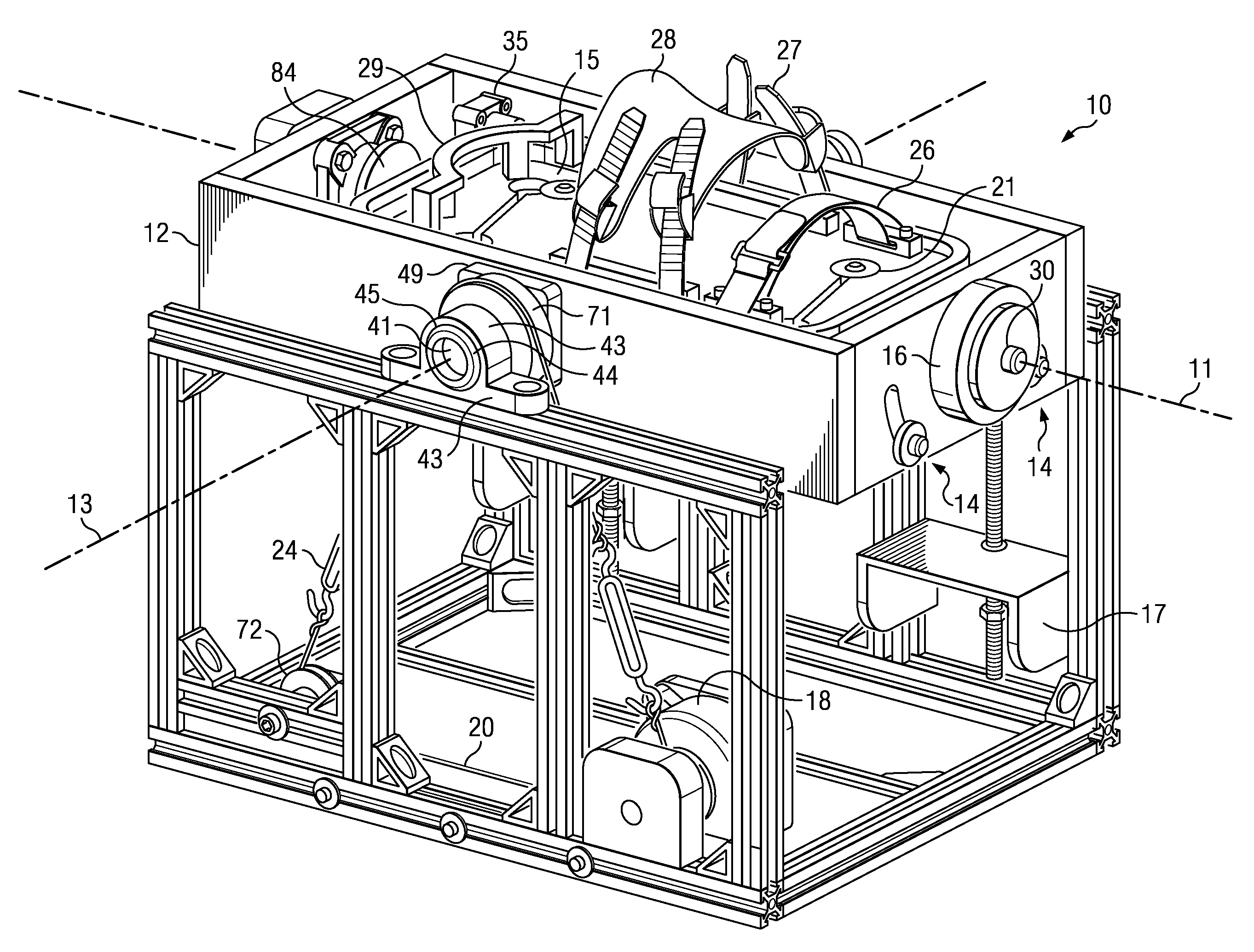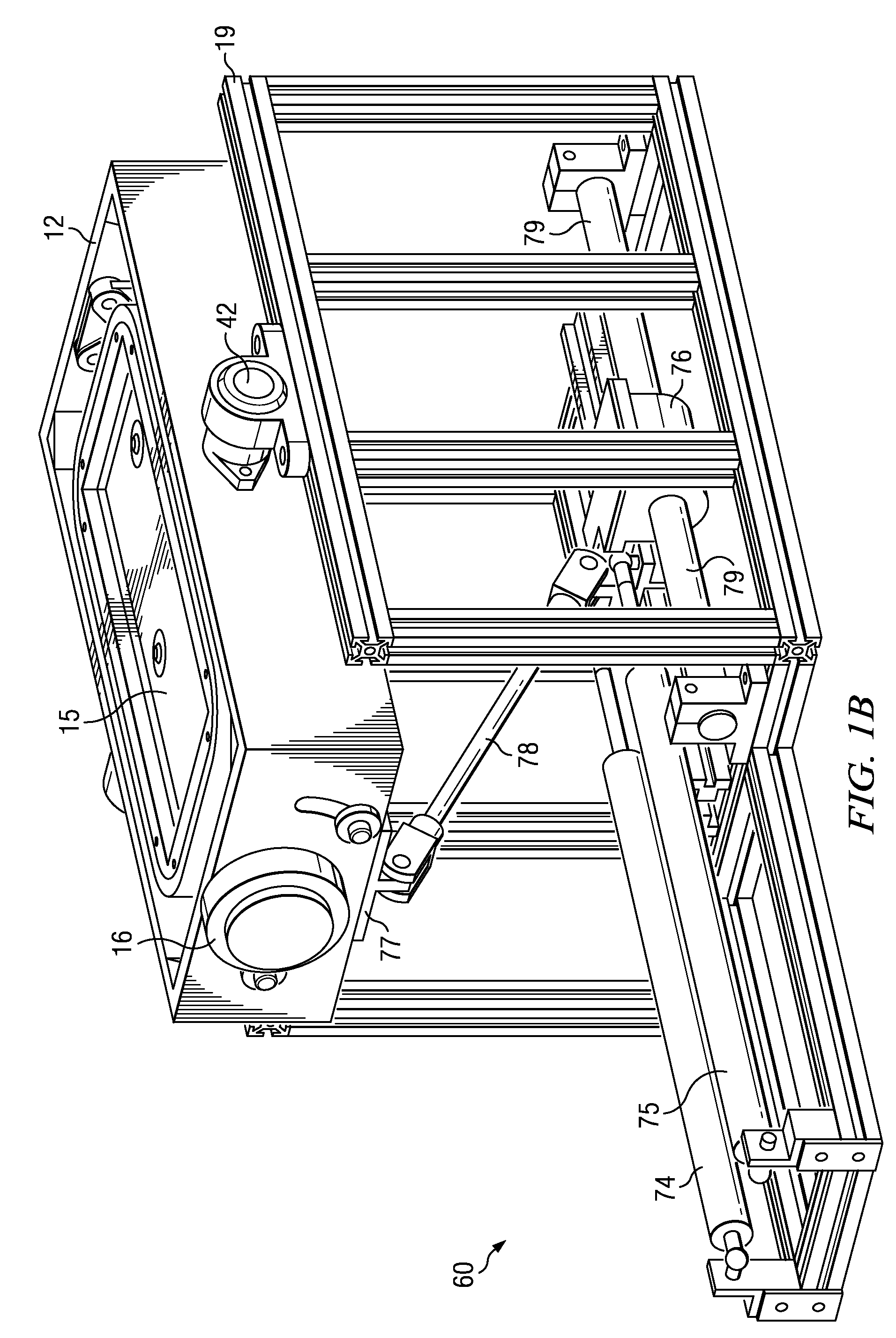Virtual ankle and balance trainer system
a trainer and virtual technology, applied in the field of rehabilitation systems, can solve the problems of patients at an increased risk of falling, impaired gait control and dynamic balance, frequent problems, etc., and achieve the effects of improving reciprocal motion control and speed, improving accuracy, and improving the ability to rapidly generate torqu
- Summary
- Abstract
- Description
- Claims
- Application Information
AI Technical Summary
Benefits of technology
Problems solved by technology
Method used
Image
Examples
Embodiment Construction
[0038]The mechatronic, virtual ankle and balance trainer system disclosed herein includes hardware and software components, which are described in greater detail below. The hardware components of the VABAT rehabilitation system include a stable, stationary platform, a controllable, selectively-movable, multiple degree-of-freedom (DOF) robotic platform that is adapted to be coupled to a user's foot and ankle; a gaming interface; and a computer-based controller with a data acquisition system.
[0039]A multiple degree-of-freedom ankle rehabilitation system was described in U.S. Provisional Patent Application No. 61 / 266,591 filed on Dec. 4, 2009, which is incorporated herein in its entirety by reference. Although this disclosure will describe the VABAT system and computer interface in terms of only two degrees-of-freedom, those of ordinary skill in the art can appreciate that a more sophisticated system with additional degrees-of-freedom, i.e., greater than two, can be made in accordance ...
PUM
 Login to View More
Login to View More Abstract
Description
Claims
Application Information
 Login to View More
Login to View More - R&D
- Intellectual Property
- Life Sciences
- Materials
- Tech Scout
- Unparalleled Data Quality
- Higher Quality Content
- 60% Fewer Hallucinations
Browse by: Latest US Patents, China's latest patents, Technical Efficacy Thesaurus, Application Domain, Technology Topic, Popular Technical Reports.
© 2025 PatSnap. All rights reserved.Legal|Privacy policy|Modern Slavery Act Transparency Statement|Sitemap|About US| Contact US: help@patsnap.com



